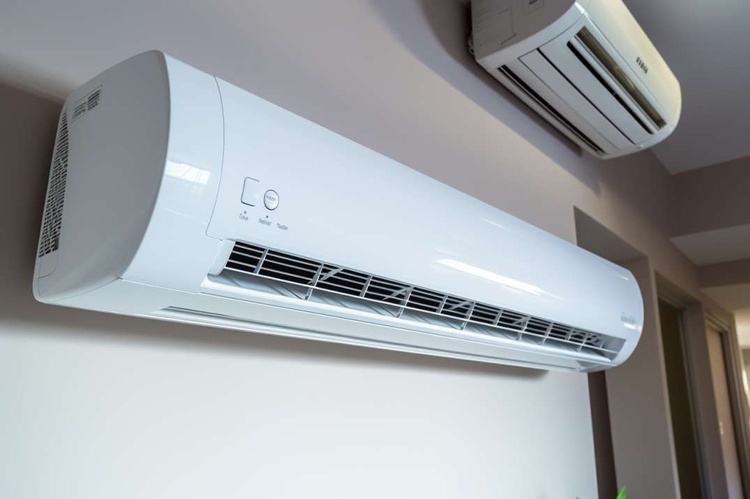Energy efficiency considerations for continuous air cleaning
Running an air purifier continuously can significantly impact your energy bills and environmental footprint. Understanding the energy consumption patterns of different models, their efficiency ratings, and operational costs helps you make informed decisions about maintaining clean indoor air without excessive power usage. This guide explores how to balance air quality improvement with energy conservation.

Modern air purifiers offer various energy-efficient features that allow for continuous operation without dramatically increasing electricity costs. The key lies in understanding power consumption specifications, selecting appropriately sized units, and utilizing smart features that optimize performance while minimizing energy waste.
How to Choose an Air Purifier for Different Room Sizes
Selecting the right air purifier size directly affects energy efficiency. Units too small for a space must work harder and run longer cycles, consuming more power. Manufacturers specify coverage area in square feet or cubic meters, and matching this to your room dimensions ensures optimal performance. A purifier rated for 300 square feet will operate efficiently in that space but struggle in a 500-square-foot room, running continuously at maximum speed and drawing excessive power. Consider ceiling height as well, since air volume matters more than floor space alone. For open-concept areas, calculate the total volume and choose a unit with appropriate Clean Air Delivery Rate specifications. Oversized units may seem wasteful, but they often run at lower speeds more frequently, which typically consumes less energy than smaller units operating at maximum capacity constantly.
Guide to Understanding Air Purifier Filters and Their Functions
Filter types significantly influence energy consumption patterns. HEPA filters create airflow resistance, requiring more powerful fans and higher energy draw. Pre-filters capture larger particles before air reaches the HEPA layer, reducing strain on the main filter and allowing the motor to operate more efficiently. Activated carbon filters add minimal resistance but must be replaced regularly to prevent reduced airflow that forces the motor to work harder. Electrostatic and ionic filters use less energy than mechanical filtration systems but may produce trace ozone as a byproduct. Washable filters reduce replacement costs and waste but require regular maintenance to maintain efficiency. Some advanced models use UV-C lights for additional purification, adding 10-40 watts to overall consumption. Understanding these filter functions helps you choose systems that balance purification effectiveness with power requirements for continuous operation.
How Air Purifiers Help Improve Indoor Air Quality
Air purifiers remove particulates, allergens, volatile organic compounds, and microbial contaminants from indoor environments. Continuous operation maintains consistently clean air rather than periodic cleaning, which is especially beneficial for individuals with respiratory sensitivities or allergies. Modern sensors detect pollutant levels and adjust fan speeds automatically, improving energy efficiency while maintaining air quality standards. Running purifiers continuously prevents pollutant accumulation, which would otherwise require high-speed operation to remediate. The health benefits of improved air quality often justify the energy costs, particularly in urban environments with high outdoor pollution or homes with pets, smokers, or construction activities nearby. Energy-efficient continuous operation typically costs between 5-30 dollars monthly depending on unit size and local electricity rates, a modest investment for sustained air quality improvement.
Energy Consumption and Cost Comparison
Continuous operation costs vary significantly based on unit specifications and usage patterns. Understanding real-world consumption helps budget for long-term operation.
| Unit Type | Typical Wattage | Monthly Cost (24/7 at $0.13/kWh) | Annual Cost Estimation |
|---|---|---|---|
| Small Room (HEPA) | 30-50W | $3-5 | $35-60 |
| Medium Room (HEPA) | 50-80W | $5-8 | $60-95 |
| Large Room (HEPA) | 80-120W | $8-12 | $95-140 |
| Whole House System | 150-300W | $15-30 | $175-350 |
| Ionic/Electrostatic | 10-25W | $1-3 | $12-35 |
Prices, rates, or cost estimates mentioned in this article are based on the latest available information but may change over time. Independent research is advised before making financial decisions.
Steps to Maintain and Clean Air Purifiers at Home
Regular maintenance directly impacts energy efficiency during continuous operation. Clogged filters restrict airflow, forcing motors to draw more power while delivering reduced performance. Check pre-filters monthly and vacuum or wash them according to manufacturer guidelines. HEPA filters typically require replacement every 6-12 months depending on air quality and usage intensity. Activated carbon filters lose effectiveness after 3-6 months and should be replaced even if they appear clean. Clean the unit exterior and intake vents quarterly to prevent dust accumulation that blocks airflow. Inspect fan blades annually for dust buildup that creates imbalance and increases motor strain. Some models feature filter replacement indicators based on runtime hours or sensor readings, providing guidance for optimal maintenance timing. Proper maintenance can reduce energy consumption by 15-25 percent compared to neglected units while extending equipment lifespan and maintaining purification effectiveness.
Energy-efficient continuous air cleaning requires thoughtful selection, proper sizing, and consistent maintenance. Modern air purifiers with smart sensors, variable speed controls, and efficient motor designs make 24/7 operation practical and affordable for most households. By understanding the relationship between filter types, room sizing, and power consumption, you can maintain excellent indoor air quality while minimizing energy costs and environmental impact.




